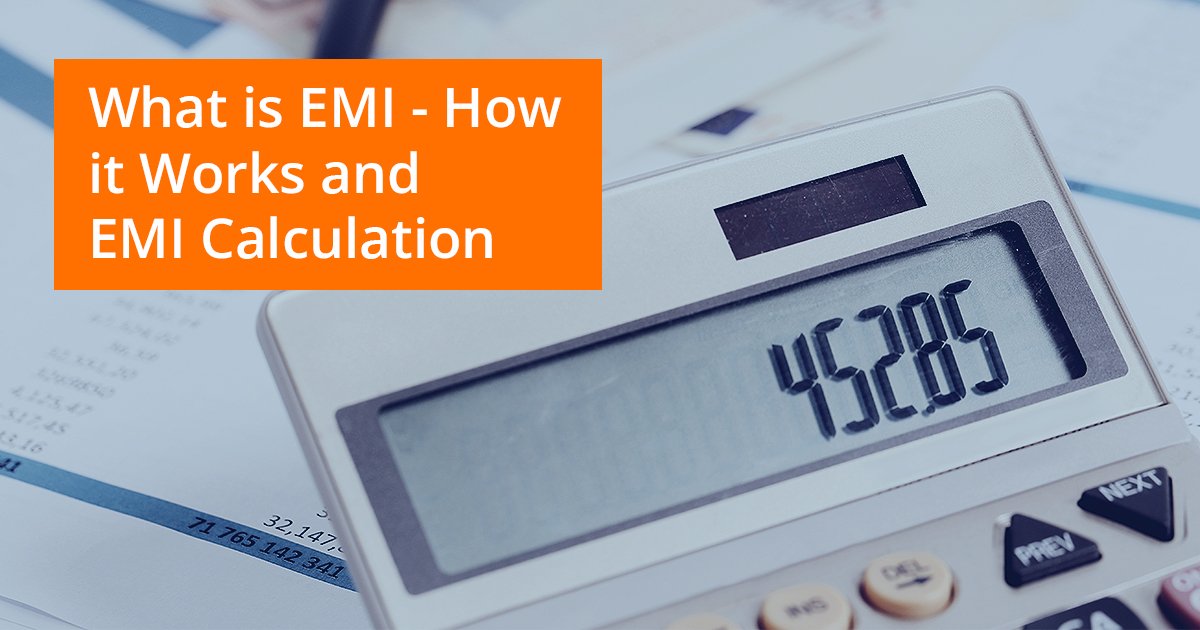EMI stands for Equated Monthly Installment, which is a fixed amount of money that a borrower has to pay to a lender every month until the loan is fully repaid. EMI is one of the most common ways of repaying loans, especially for business loans, as it helps the borrower to plan their finances and budget accordingly. EMI also ensures that the lender gets a steady and regular income from the loan.
What is EMI (Equated Monthly Installment)?
EMI is the acronym for Equated Monthly Installment, which is a fixed amount of money that a borrower has to pay to a lender every month until the loan is fully repaid.
Components of EMI
The EMI amount depends on three main components:
- Principal amount:
This is the original amount of money that the borrower borrows from the lender. The principal amount is usually reduced by the EMI payments over time, until it becomes zero at the end of the loan tenure.
- Interest rate:
This is the percentage of the principal amount that the lender charges as the cost of lending the money. The interest rate can be either fixed or variable, depending on the type and terms of the loan. The business loan interest rate determines how much extra money the borrower has to pay to the lender over the principal amount.
- Loan tenure:
This is the duration of time that the borrower has to repay the loan. The loan tenure can be either short-term or long-term, depending on the purpose and affordability of the loan. The loan tenure affects the EMI amount, as longer tenures usually result in lower EMIs, but higher interest payments.
How does an EMI work?
An EMI works by dividing the total amount of the loan (principal + interest) by the number of months in the loan tenure. This gives the EMI amount that the borrower has to pay every month to the lender. The EMI amount remains constant throughout the loan tenure, unless there are changes in the interest rate or the loan terms.
The EMI payment consists of two parts: the principal repayment and the interest payment. In the initial months of the loan tenure, the interest payment is higher than the principal repayment, as the principal amount is still large. As the loan progresses, the principal amount reduces, and so does the interest payment. In the final months of the loan tenure, the principal repayment is higher than the interest payment, as the principal amount is almost zero.
The EMI payment has both advantages and disadvantages for the borrower and the lender. Some of the advantages are:
- The EMI payment helps the borrower to plan their finances and budget accordingly, as they know how much money they have to pay every month to the lender.
- The EMI payment ensures that the lender gets a steady and regular income from the loan, as they receive the same amount of money every month from the borrower.
- The EMI payment reduces the risk of default or non-payment, as the borrower has to pay a fixed amount every month, rather than a lump sum at the end of the loan tenure.
Some of the disadvantages are:
- The EMI payment increases the total cost of the loan, as the borrower has to pay interest on the principal amount for the entire loan tenure, even if the principal amount reduces over time.
- The EMI payment limits the flexibility and liquidity of the borrower, as they have to pay a fixed amount every month to the lender, regardless of their income or expenses.
- The EMI payment can be affected by changes in the interest rate or the loan terms, which can increase or decrease the EMI amount, and cause financial stress or confusion for the borrower.
EMI Calculation Formula
To calculate Equated Monthly Installments (EMIs), you can use the EMI formula:
E = P × r × (1 + r)^n / ((1 + r)^n – 1)
Where:
– E represents the EMI (Equated Monthly Installment)
– P is the principal loan amount
– r is the monthly interest rate
– n is the tenure or duration of the loan in months
You can easily find online business loan EMI calculators to help you compute your EMI. These calculators are flexible and allow you to compare various loan principal amounts and their corresponding EMIs, making it easier for you to plan your finances effectively.
Importance of EMI in Business Loans
EMI is one of the most important aspects of business loans, as it determines the affordability and feasibility of the loan for the borrower. EMI affects the cash flow and profitability of the business, as it is a regular and fixed expense that the borrower has to pay to the lender. Therefore, it is essential for the borrower to choose the right EMI amount that suits their business needs and goals.
Some of the factors that the borrower should consider while choosing the EMI amount are:
- Business Income:
The borrower should ensure that their business income is sufficient and stable enough to cover the EMI payments, along with other expenses and contingencies. The borrower should also factor in the growth and fluctuations of their business income over the loan tenure, and adjust the EMI amount accordingly.
- Business Expenses:
The borrower should also consider their business expenses, such as operating costs, taxes, salaries, maintenance, etc., while choosing the EMI amount. The borrower should ensure that their business expenses do not exceed their business income, and that they have enough surplus to pay the EMI amount, without compromising on the quality and efficiency of their business operations.
- Business Goals: The borrower should also align their EMI amount with their business goals, such as expansion, diversification, innovation, etc. The borrower should choose an EMI amount that allows them to invest in their business growth and development, without hampering their loan repayment capacity. The borrower should also consider the return on investment (ROI) of their business activities, and compare it with the cost of the loan (interest rate), to ensure that the loan is beneficial and profitable for their business.





